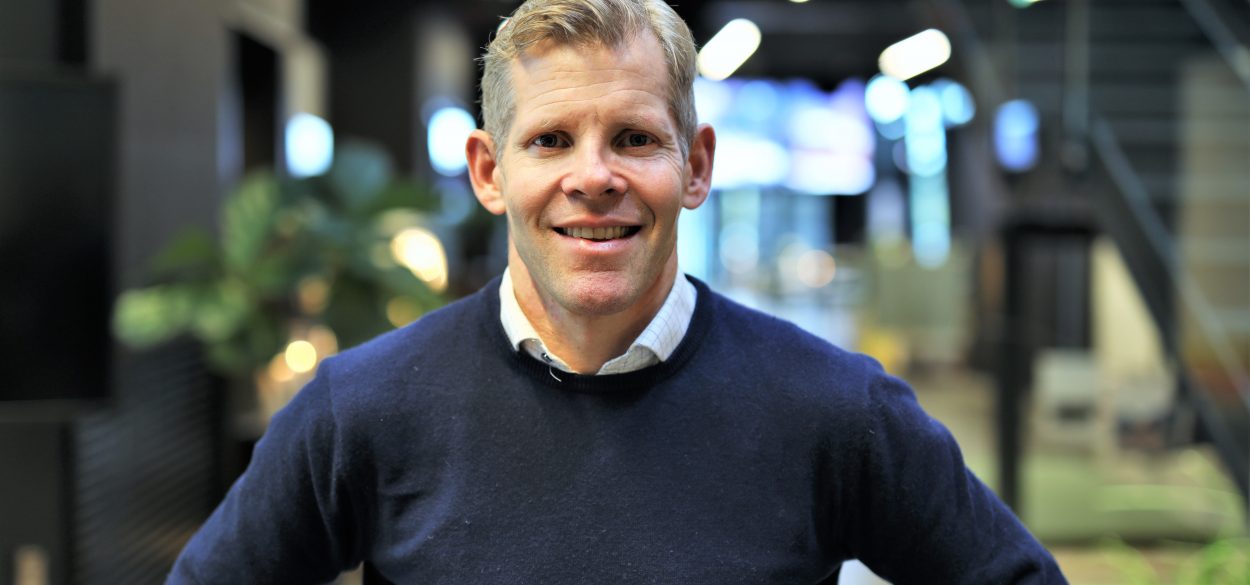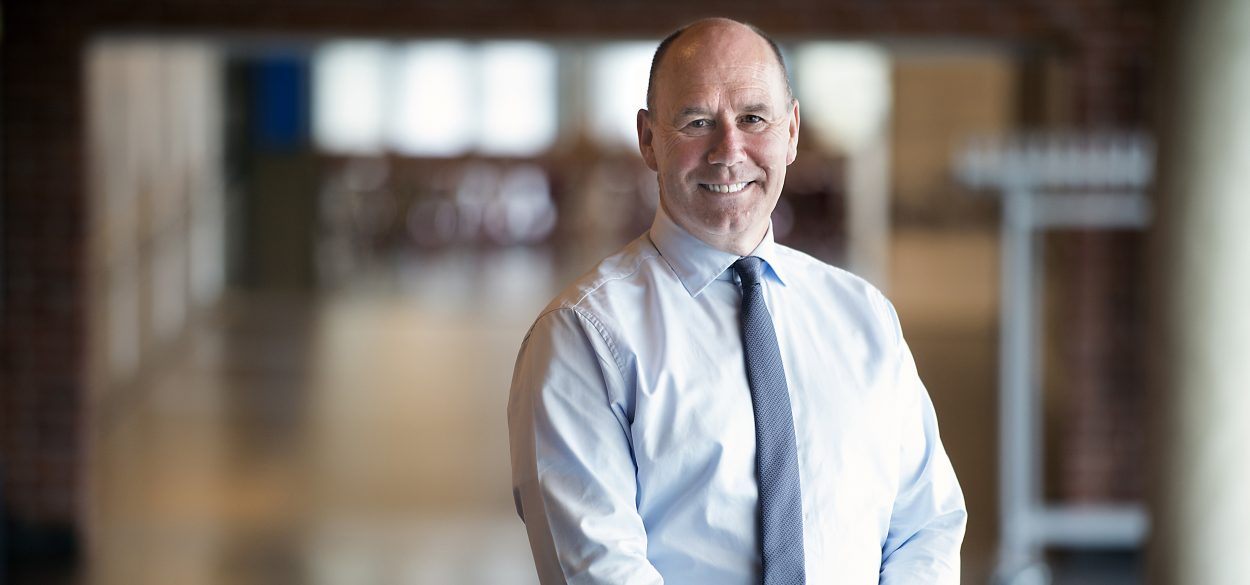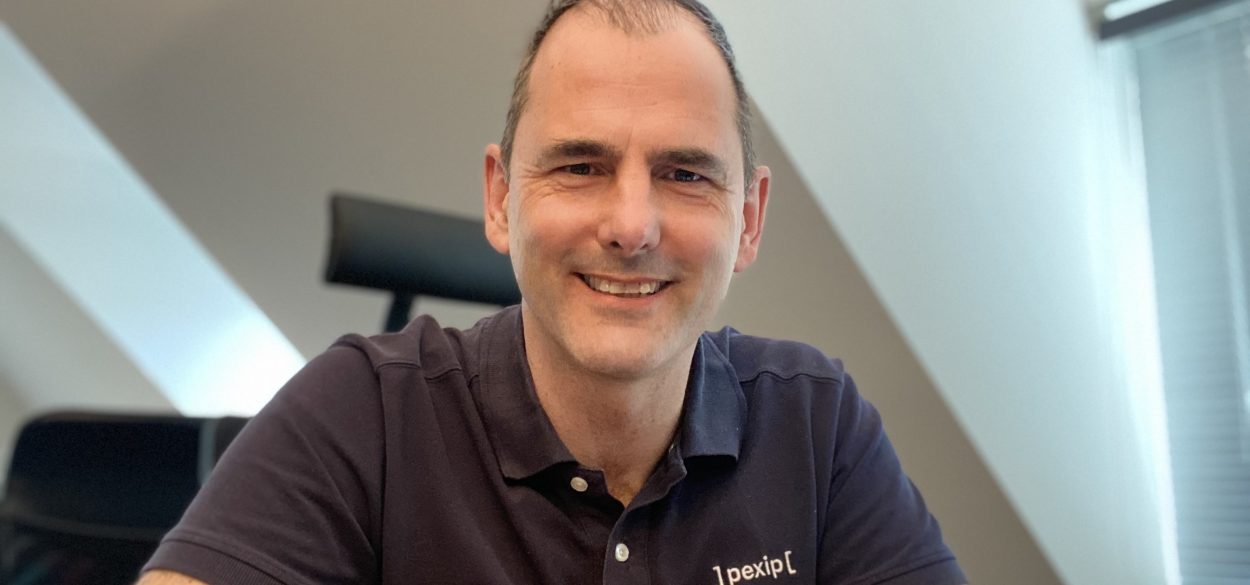Work
Technology is predicted to transform work life as we know it by the next decade. Telenor's Digital Outlook 2030 tackles the spectrum of issues companies and cities will face, from setting 'green' and 'flexibility' expectations to utilising new digital tools to become 'smarter.'

Telenor Research: Future way of work – moving on from work-from-home utopia
Jarle Hildrum, Fellow at Telenor Research.

As lockdowns are finally ending, the enthusiasm among firms for “all things hybrid” are being replaced with pragmatism concerning the return to office. Companies are now facing difficult decisions regarding the amount of flexibility employees should be granted, as well as whether to invest more in office spaces or in digital collaboration tools.
The first thing that will happen (once societies fully open) is that most firms will give their employees rather extensive freedom to choose where and when to work. Team leaders will retain the right to instruct the team to work from the office on certain days, but we expect that they will be initially careful exercising this right. The reason is simple market dynamics. Companies that do not offer high flexibility after re-opening will struggle to recruit and retain talent. This situation is not sustainable, however. We predict that companies that follow a near-full flexibility model will run into difficulties that will induce them to rein in the flexibility and insist on some office presence part of the time. There are at least two reasons why this will happen:
The first has to do with culture. The way companies perpetuate culture is that newly hired employees experience the social dynamic of the company first-hand and adapt to it. But during the pandemic, the newly hired never got an opportunity to participate in this. This shift represents a potential fracture between older employees, who experienced and learned culture first-hand in the office, and younger employees, who so far have not had the opportunity to do so. The fracture might widen over the coming years if many experienced employees choose to stay home. We believe that managers will notice this change within a year or two and try to counteract it by more carefully regulating who will be at the office and at what time.
The second reason has to do with choice. If one gives employees near full freedom to choose if and when to come into the office, we might risk a backlash in diversity and equality. For instance, a study from U.S. shows that females generally express stronger preference to work from home than males. In time, we might experience that the tendency is prominent in other countries and applies to other segments in the population as well. Those who choose to stay more at the office will, on average, get better career opportunities than the remote workers. Once these unintended consequences become visible, we expect managers to impose clearer rules about who should come into the office and at what time.
Although there are many challenges associated with remote work, we believe many are solvable. As tech companies are ramping up R&D, the range of options in meeting tools will be much greater than it is today. We will see new tools, such as low-cost holographic video, that solve some of the “media richness” problems associated with current video conferencing tools. At the same time, these tools will be better able to facilitate work processes where both co-present and remote participants jointly solve problems. By focusing on joint workflows there is an opportunity to involve remote workers more closely in what is going on at the office.
Lastly, we do not believe a widespread transition to a “work from anywhere” model is likely in 2030. Instead, employees in most firms will have the opportunity to work from home part-time, but this will require careful planning of the workweek schedule to avoid creating a negative impact on their co-workers and their team. New generations of collaboration technology will support this mode of work and we expect that a permanent increase in working from home will lead companies to sell office space and to search for fresh solutions. Better collaboration technology will also reduce the need for business travel and commuting on a permanent basis. The decline will create substantial and beneficial environmental effects. Finally, the companies that will benefit the most from the impact of the pandemic long-term are the ones that are willing to experiment, learn, and adapt as they go.
Could a more flexible workday mean a more diverse workplace?
NHH: Working towards green, because it’s the new black!
Tor W. Andreassen, Professor and Director at the DIG-center, NHH Norwegian School of Economics.

While governments, citizens, and investors are increasing their ESG (environmental, social, and governance) focus, companies are, according to customers, failing, new research shows! The European Commission has presented a package with proposals for regulations and sustainable finance. The initiative is linked to the Paris Agreement and the UN 2030. The regulations are intended to facilitate that the EU framework for the financial area embraces assessments of factors related to ESG. The EU directive was implemented on 21 March this year.
Not surprisingly, customers are increasingly concerned about the environmental effects of the goods and services they buy and consume. For example, sales of sustainable products increased by 30 percent in the period 2013 to 2018. The fact that the same people in their role as investors are increasingly investing in ESG funds reinforces the impression. The authorities use several instruments to stimulate sustainability. For example, the authorities in Milan have started offering a 20 percent waste tax reduction if companies, rather than throwing away usable food, donate it to charities.
Investors’ sustainable investments have doubled between 2012 and 2018. On 9 December, the New York State Pension Fund announced that it will dispose of many of its fossil fuel stocks over the next five years and sell its shares in companies that contribute to global heating by 2040. The message is clear: companies must adhere to the sustainability goals because customers, governments, lenders, and investors demand or expect it. Our research supports this claim.
In our study, we asked: where do CEOs get the highest return on innovations: create more happy customers by digitising the front end of the firm or innovate in areas that are good for the environment and society in accordance with the emerging ESG requirements?
To our surprise, the latter – social innovations – had a three times stronger correlation with perceived innovativeness than digital innovations. From this, we can draw that social or ESG innovations are the stronger driver of future cash flow. This is good news. United Nation’s sustainability goal #12 is about responsible production and consumption. From our study and by looking ahead, it seems like a safe prediction that firms will increasingly produce goods and services that enable consumers to live their lives more responsibly. If not, customers will exclude them from their choices. Faced with bankruptcy, most firms will innovate to deliver on customers’ need to consume responsibly.
“Smart” leaders may try to avoid or postpone such innovations by moving their goods and services to consumers in less developed societies. That is a business practice of the past. Today, negative word of mouth on social media will arrive in the new markets long before their goods and services do. Therefore, I expect that firms increasingly will become part of the solution rather than the problem simply because it is the right thing to do. Green, as the new black, is a bonus.
Close ties between academia and business keep Norway at the innovation forefront
Pexip: By 2030, virtual meetings will be better than in-person meetings
Tom-Erik Lia, Chief Commercial Officer, Pexip

In the years to come, the green shift will include the opportunity to work from anywhere, reducing traffic, travel and energy consumption. To succeed in this by 2030, organisations must prioritize digital inclusion, establishing equality between home and office for their employees. Video conferencing is already one such tool to facilitate that equality. It’s already considered business-critical by millions of users today, a sentiment that has only accelerated in the move to hybrid working.
In the future, providing a consistent, high-quality audio and video experience will be vital to developing efficiency, trust, and satisfaction in companies. And it will be the key to truly enabling a hybrid or remote working future. That’s why we believe that virtual meetings will be better than in-person meetings by 2030.
One way to make this happen is through Artificial Intelligence (AI), which we believe will be crucial in improving what happens before, during and after meetings. The meeting experience will become more engaging, mimicking the natural conversation flow of in-person meetings. Automatic language translation and interpretation will further remove communication barriers. The application of AI is already helping to level the playing field in video meetings. Traditionally, only the person speaking is in the spotlight, limiting non-verbal cues from other participants. Smart use of AI will help to automatically detects face, frame them, and arrange the layout to give both non-speaking large groups and active speakers more screen space, for a more natural experience. And this is just the beginning. We believe that by 2030, AI will be powering a truly immersive video experience that essentially eliminates digital meeting fatigue.
At Pexip, we provide video conferencing for large public and private sector organisations. We have seen a recent explosion in business-to-consumer (B2C) applications of video conferencing technology, and we believe this will accelerate rapidly towards 2030. Sectors such as healthcare, government, and financial services are already integrating video into their services, tools, and workflows to build trust and loyalty and improve care through telehealth consultations, virtual court hearings, and remote banking. According to Frost & Sullivan, 35 per cent of first-touch medical consultations globally will be virtual within the next year. Pexip is already powering more than 600,000 video healthcare visits a week in North America alone and the HM Courts and Tribunals Service in England and Wales has held over 70,000 hearings by video powered by Pexip. In the future, we believe that a video-first mindset will contribute to a greener, more inclusive, and time-efficient daily life.
Oslo Science City: We need to build a digital city for innovation and green growth
Christine Wergeland Sørbye, CEO, Oslo Science City.

Rapid urbanisation and pressing sustainability challenges raise important conversations about how we use our cities — as hubs of work, knowledge, and economic growth. Meanwhile, the Covid-19 pandemic has forced a sea change in attitudes and practices related to mobility and localisation. Combined, these two trends have significant impacts on how we design urban areas.
Through Oslo Science City , the first innovation district in Norway, we strive to use what we have learned from these developments to build an open and inclusive urban district that germinates knowledge, innovation, and sustainable growth. Part of this transformation is physical: multi-functional buildings brimming with knowledge and talent offer inclusive arenas for exploration, interaction, and collaboration. Open green spaces and corridors, complemented by green roofs and nature-based solutions, allow us to build cityscapes that add to our shared biomass — not detract from it.
The urban space we envision will be digital in two senses. First, it is vital to design urban areas tailored to digital infrastructure, expanding the knowledge and innovation hub far beyond the city’s physical borders. Second, Oslo Science City is set to harness the power of the digitalised economy. Exponentially increasing amounts of data, complex datasets, and possibilities for instantaneous and high-speed data transfers — coupled with fantastic developments in sensor technology and processor capabilities — providing remarkable opportunities to spur innovation, create long term value, and develop thousands of new sustainable jobs.
To harvest this vast potential, cities must build innovation ecosystems with shared physical and digital meeting places for the best and brightest minds from leading research institutions, start-ups, established businesses, and the public sector to collaborate and build on each other. Based on leading knowledge in natural sciences, medicine, social sciences, and the humanities, Oslo and like-minded cities can provide vital arenas for developing, testing, and implementing new technologies, services, and solutions.
Open and inclusive spaces, supported by digital infrastructure, will encourage participation and interaction between researchers, students, start-ups, businesses, and the general public. To quote Mark Carney, former governor of the Bank of England: “The more we invest with foresight, the less we regret in hindsight.”
Read more about Live and Learn
Renewables and new technologies will help ensure a stable supply of power in the next decade, while innovation and technology is going to alter how we access, understand, and absorb knowledge. Gain more insight from the Outlook chapters about Live and Learn.